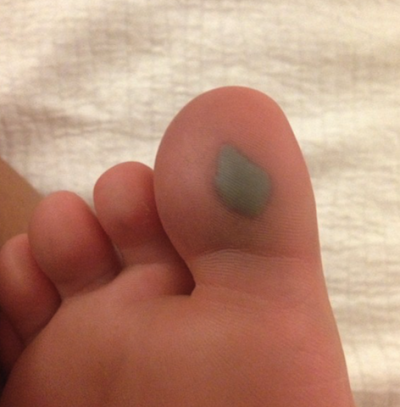CORRECT DIAGNOSIS:
UNCOMBABLE HAIR SYNDROME (AKA Spun-glass hair, Pili trianguli et canaliculi, or Cheveux incoiffables)
DISCUSSION:
This syndrome is a rare disorder with an interesting clinical presentation. The syndrome has been reported in both inherited (autosomal dominant and recessive) and sporadic forms. The presentation is usually within the first year of life. The hair is characterized by bundles of scalp hair arranged in all different directions that resist being brushed or combed. The hair is often a silvery, blonde color with a spangled or glistening appearance. Only scalp hair is affected. There are usually no associated neurological or mental deficits. The most common association is with ectodermal dysplasia. Diagnosis is made by a scanning electron microscope.
TREATMENT:
No proven effective therapy. Increased hair length may allow the hair to be more manageable. Hair quality may improve with age. There is a report of a few children who were treated with biotin, of which 3 responded
REFERENCES:
Hicks, J., Metry, D. W., Barrish, J., & Levy, M. (2001). Uncombable hair (cheveux incoiffables, pili trianguli et canaliculi) syndrome: Brief review and role of scanning electron microscopy in diagnosis. Ultrastructural Pathology, 25(2), 99-103. https://doi.org/10.1080/01913120152092502 (PMID: 11241133)
Itin, P. H., Buhler, U., Buchner, S. A., & Guggenheim, R. (1993). Pili trianguli et canaliculi: A distinctive hair shaft defect leading to uncombable hair. Dermatology, 187(4), 296-298. https://doi.org/10.1159/000246110 (PMID: 8299346)
Zegpi, M., & Roa, I. (1987). The uncombable hair syndrome. Archives of Pathology & Laboratory Medicine, 111(8), 754-755. (PMID: 3631138)




